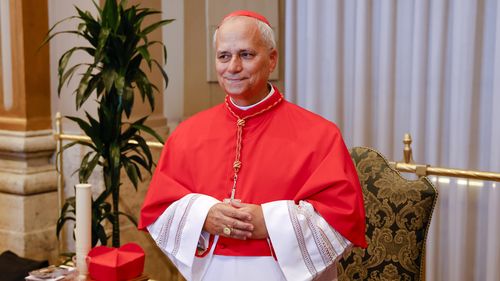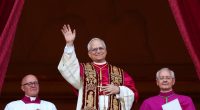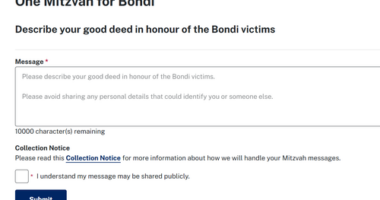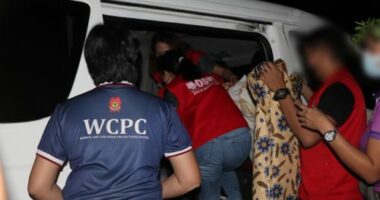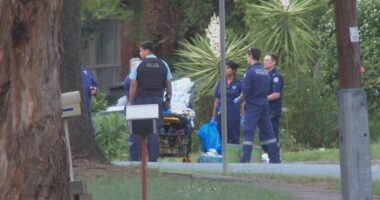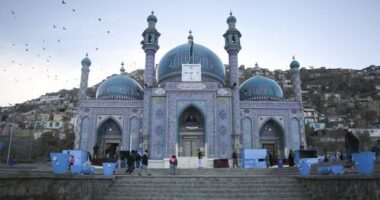Share this @internewscast.com
The Catholic Church has elected its first American pope, the Peru-based Chicago-born Cardinal Robert Prevost, who has taken the name Pope Leo XIV.


They gathered for a fourth vote after lunch on Thursday and just after 6pm (2am Friday AEST), the thousands of faithful waiting in St Peter’s Square and 1.4 billion Catholics around the world were granted the smoke signal they had been anticipating.
Cheers and applause echoed around the square as the white fumes poured out of a skinny and otherwise unremarkable chimney on top of the chapel.
Bells rang out, flags waved and the bright sun beamed down onto the large crowd.
It meant at least two-thirds of the conclave, or 89 cardinals, had reached agreement on who would replace Francis.
As the crowd waited, the Swiss Guards marched out and a military band played, marching up the steps to the basilica.
The chosen name will be disclosed subsequently, when a senior cardinal proclaims “Habemus Papam!” — meaning “We have a pope!” in Latin — from the basilica’s loggia. The cardinal then announces the winner’s birth name in Latin and the name he has decided to take.
The new pope is then expected to make his first public appearance and impart a blessing from the same loggia.

Elation as 1.4 billion people get new leader

The cardinals returned to the Sistine Chapel on Thursday to continue the voting process for a new pope, with crowds reconvening in St Peter’s Square to hear the outcome, as the initial conclave vote had failed to result in a decision during a longer-than-expected session on Wednesday afternoon.
They were sequestered from the outside world, their mobile phones surrendered and airwaves around the Vatican jammed to prevent all communications until they find a new pope.
Francis named 108 of the 133 “princes of the church”, choosing many pastors in his image from far-flung countries like Mongolia, Sweden and Tonga that had never had a cardinal before.
His decision to surpass the usual limit of 120 cardinal electors both lengthened the amount of time it took for each vote to be processed and injected more uncertainty into a process that is always full of mystery and suspense.
Some of the 133 voting cardinals had said they expected a short conclave to replace Pope Francis and elect the person who will become the 267th pope.


Earlier Thursday, large school groups joined the mix of humanity awaiting the outcome in St Peter’s Square. They blended in with people participating in preplanned Holy Year pilgrimages and journalists from around the world who have descended on Rome to document the election.
“The wait is marvelous!” said Priscilla Parlante, a Roman.
Pedro Deget, 22, a finance student from Argentina, said he and his family visited Rome during the Argentine pope’s pontificate and were hoping for a new pope in Francis’ image.
“Francis did well in opening the church to the outside world, but on other fronts maybe he didn’t do enough. We’ll see if the next one will be able to do more,” Deget said from the piazza.


The voting followed a strict choreography, dictated by church law.
Each cardinal writes his choice on a piece of paper inscribed with the words “Eligo in summen pontificem” â “I elect as supreme pontiff”.
They approach the altar one by one and say: “I call as my witness, Christ the Lord who will be my judge, that my vote is given to the one who, before God, I think should be elected.”
The folded ballot is placed on a round plate and tipped into a silver and gold urn. Once cast, the ballots are opened one by one by three different “scrutineers”, cardinals selected at random who write down the names and read them aloud.
The scrutineers, whose work is checked by other cardinals called revisers, then add up the results of each round of balloting and write them on a separate sheet of paper, which is preserved in the papal archives.

As the scrutineer reads out each name, he pierces each ballot with a needle through the word “Eligo”. All the ballots are then bound together with thread, and the bundle is put aside and burned in the chapel stove along with a chemical to produce the smoke.
– With Associated Press
